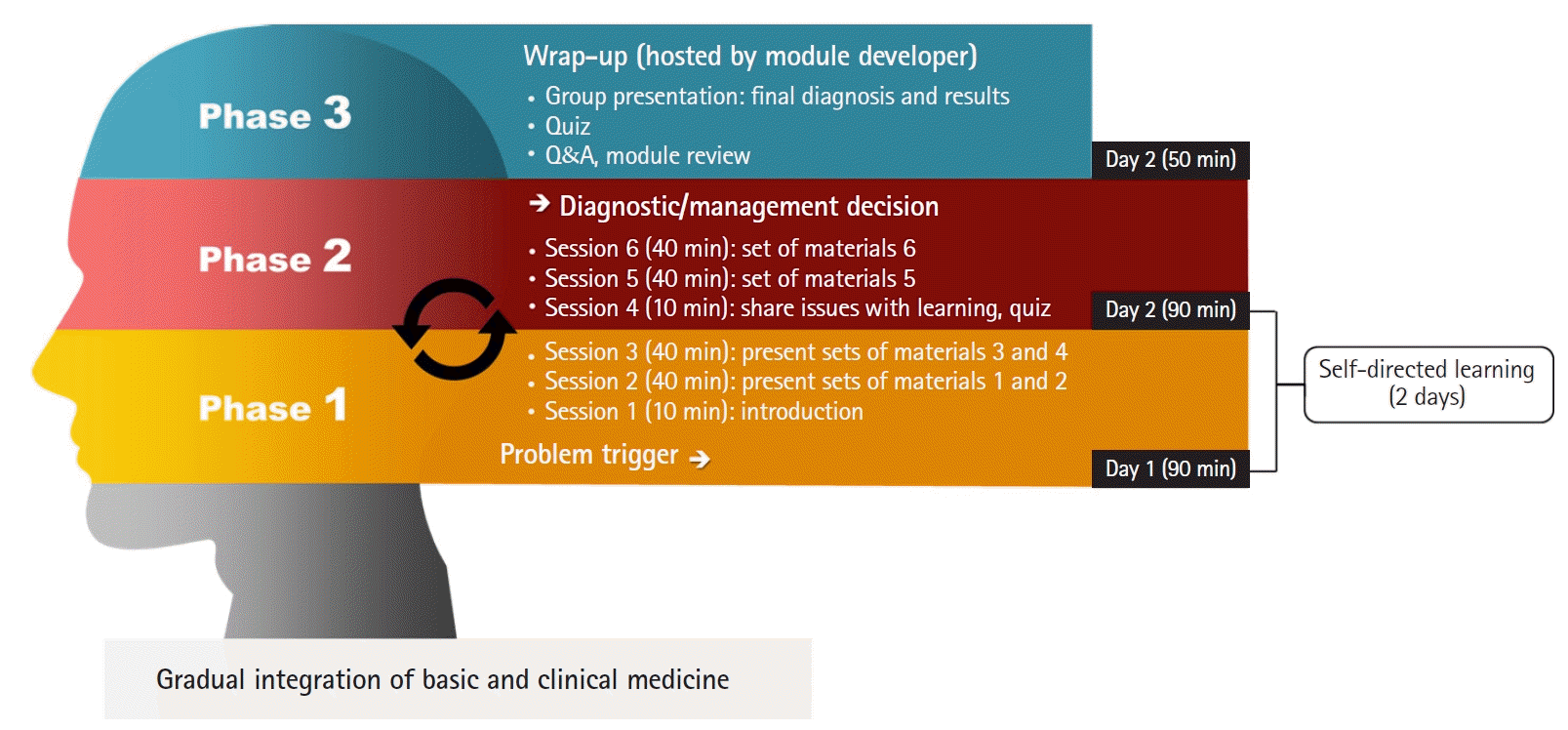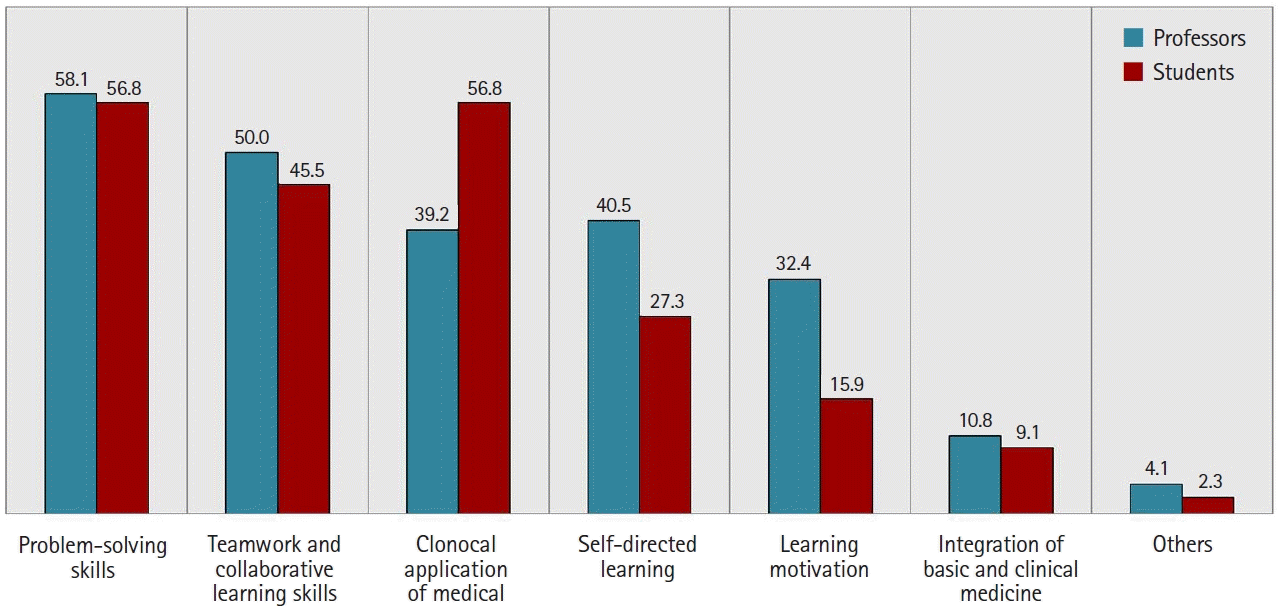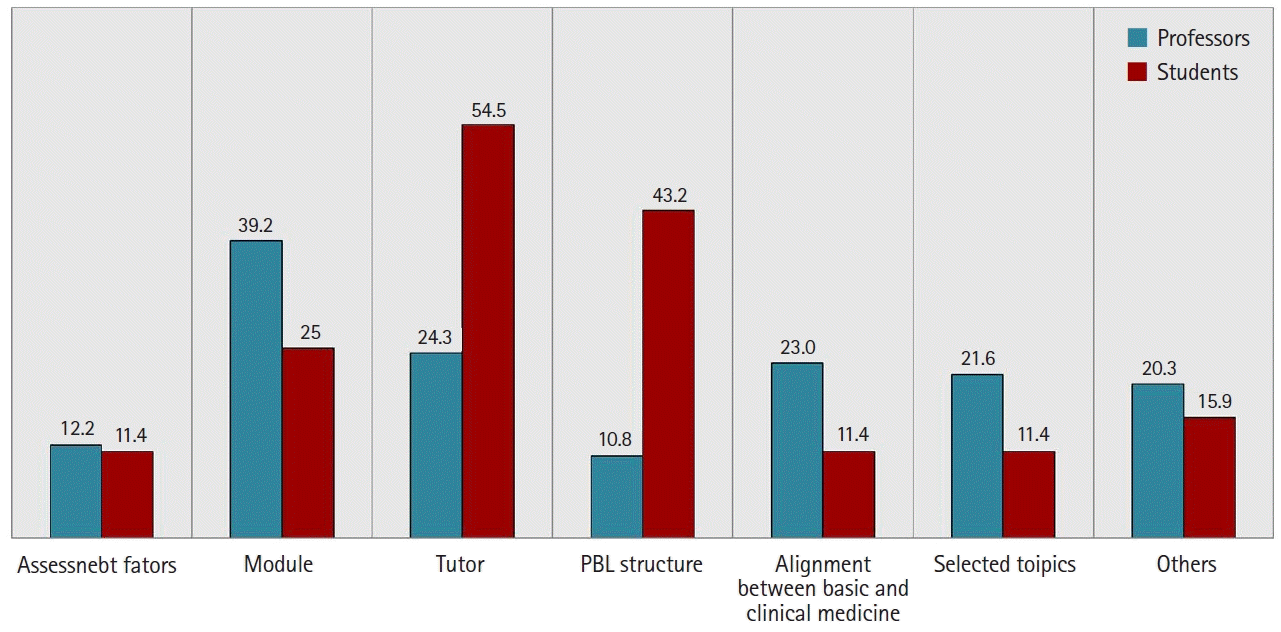Introduction
Methods
Ethics statement
Study design
Subjects and technical information
Results
Achievement of educational goals
Satisfaction with the problem-based learning program
Professors’ opinions on modules
“The modules were too easy and could be answered at the beginning of the session.”
“The provided materials were insufficient and caused difficulties in the session.”
“The unrefined module methods caused delays in reaching the desired performance outcomes. The modules were focused on human beings with numerous health issues, rather than focusing on a certain disease.”
“The difficulty level of the modules should be enhanced to enable students to dig deeper into the topic.”
“It may be challenging to create modules, but the level of difficulty of the modules showed a problematic degree of variation.”
“Some problems and answers had errors. They need to be revised.”
Some examples of students’ negative opinions regarding their tutors are presented below.
Students’ opinions on tutors
“Some tutors seem to lead the PBL session without considering that the students, who know nothing about clinical medicine. When students suggested ideas, they would reject them as ‘clinically impossible,’ which is far from the intention of PBL”
“It was difficult to grasp the learning issues since the topics were new. Tutors should intervene more when the discussions go completely off track.”
“I wish that the tutors could suggest more diverse conditions associated with certain symptoms, other than those aligned with the corresponding course unit.”
“The sessions are run in different ways depending on the tutor.”
Suitability of operational implementation
Professors’ opinions on timing
“PBL program should not overlap with exam periods, when students become less interested in the classes because they must focus on their exams.”
“PBL program should be held before regular courses to promote interest.”
“The content overlap with regular course meant that students had already learned the conditions covered, leaving less room to explore new conditions.”
Students’ opinions on timing
“The PBL program were close to exam periods, making it difficult to prepare for the PBL.”
“Assignments were not quite relevant for the regular courses, creating a burden for other coursework and exams.”
“The PBL program was not efficient because it proceeded without basic knowledge. Arranging all PBL programs at the end of M2 would help students to have discussions more effectively and to solve problems in a more integrated way.”




 PDF
PDF Citation
Citation Print
Print







 XML Download
XML Download